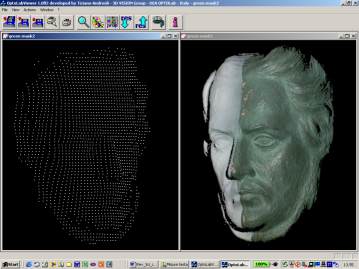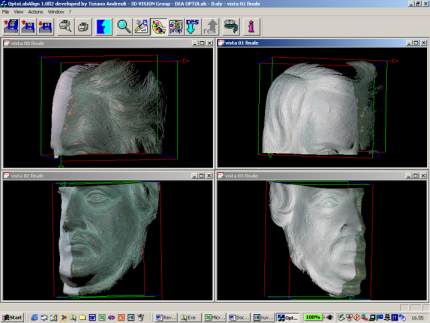OPL_Align is used to increase the quality of the alignment, especially in the case of very accurate point clouds that the performance of View-Integrator cannot align at the measurement accuracy. Also in this case, a pair-wise matching is used, based on the Iterative Closest Point approach. Fig. 1 shows an example of the performance of this tool.
The bass-rilief of Fig. 1 is chosen as the test object. The two partial views in the frames are shown in the OPL_Align environment in Fig. 2, where it is also evidenced the common region used to perform the alignment. The top figure in Fig. 3 shows the relative position between the two patches (Vista 1 and Vista 2 respectively) is shown before and after the alignment. The bottom figure in Fig. 3 shows the performance of the alignment.











